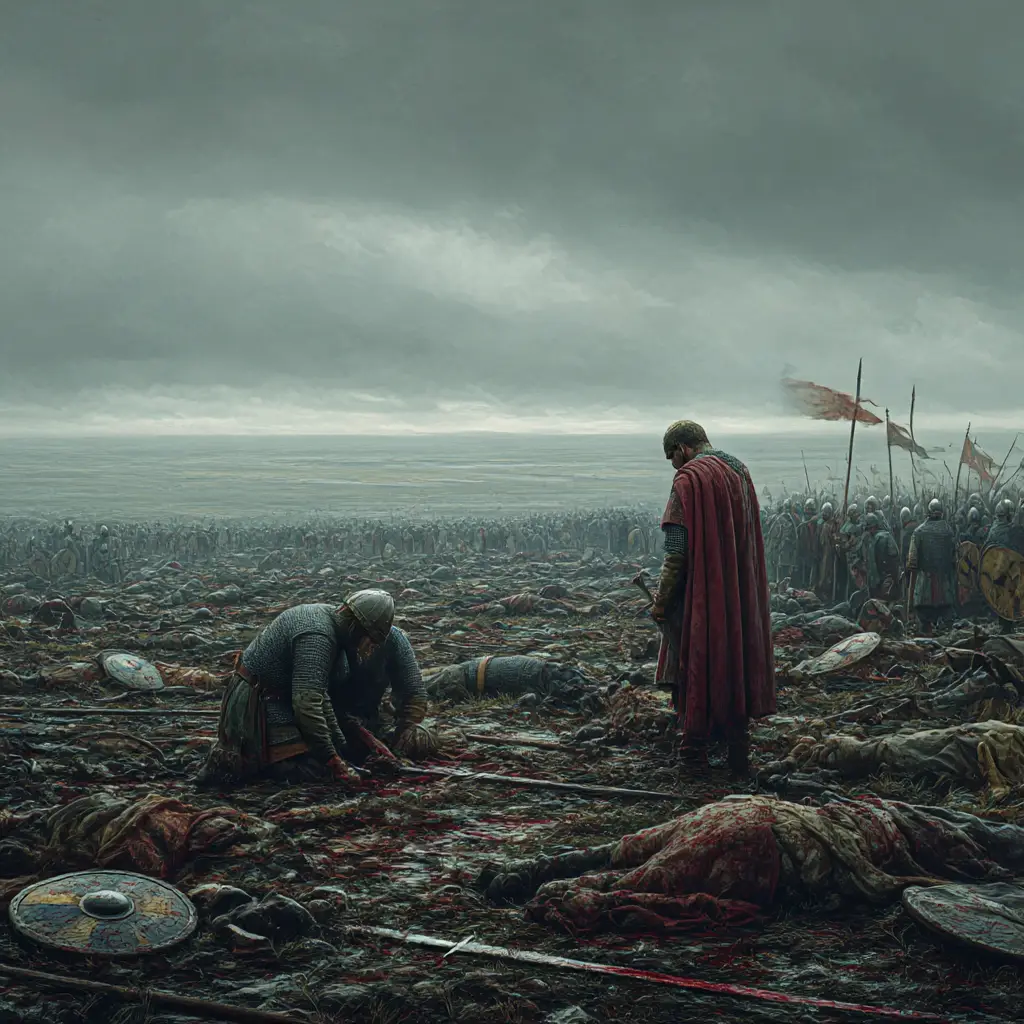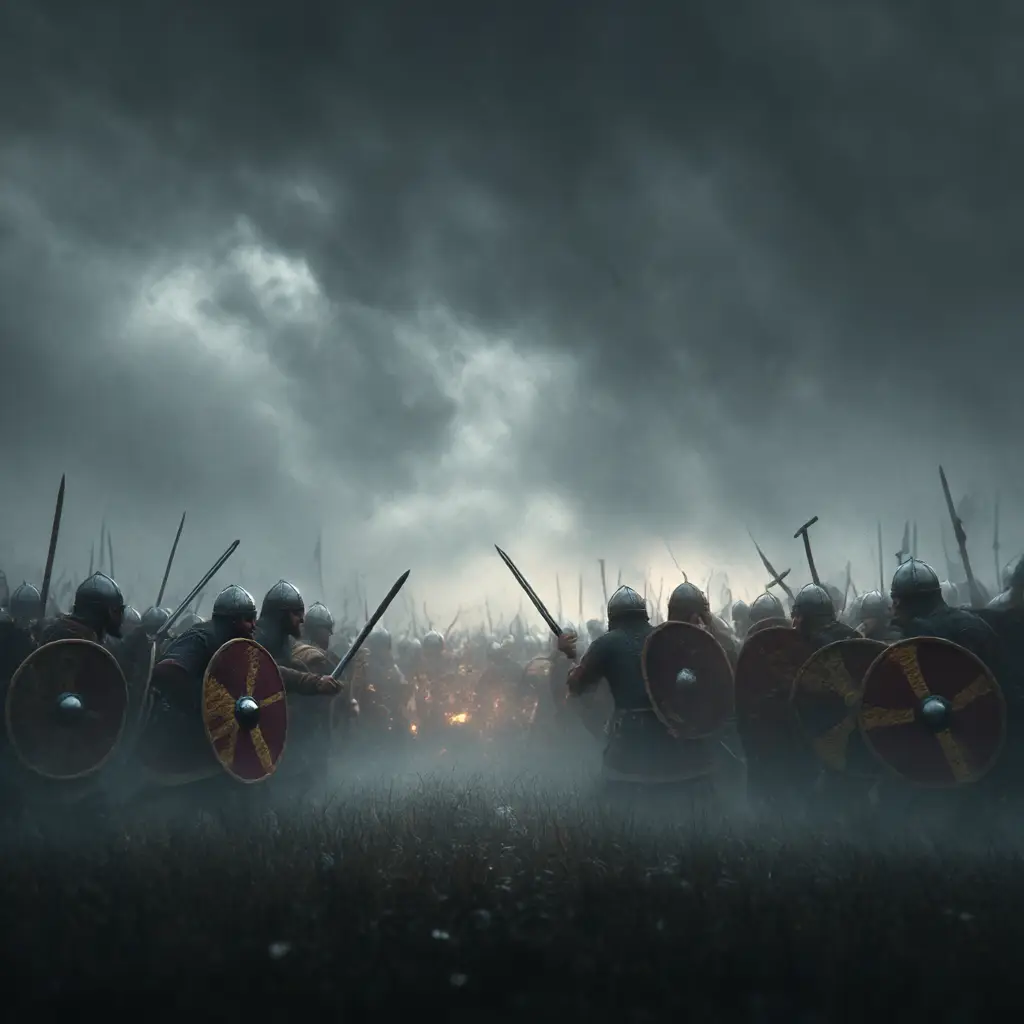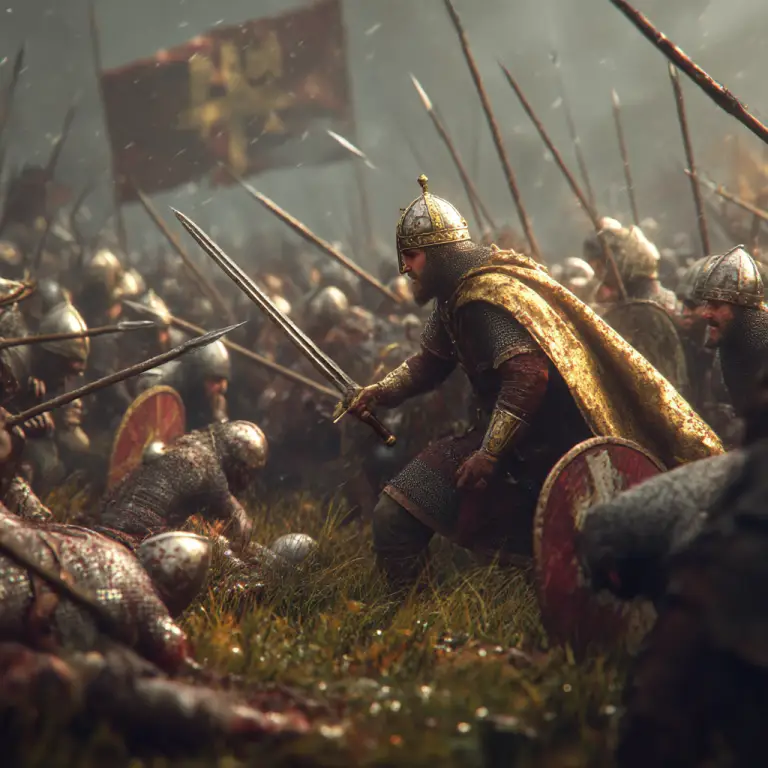The Vikings and the Battle of Brunanburh
The Battle of Brunanburh, fought in 937 AD, stands as one of the most significant conflicts in early medieval Britain. It was a defining moment in the struggle for power between the emerging kingdom of England and a powerful alliance of rival forces, including the Vikings. The battle is often seen as a pivotal step in the unification of England under one ruler, with the Norse playing a crucial role in the opposing coalition.
Background to the Conflict
By the early 10th century, England was a patchwork of kingdoms, many of which had been destabilised by Viking raids and settlements during the previous century. The Danelaw – areas of northern and eastern England under Norse control – had left a lasting impact on English society, culture, and politics.
In 937, King Athelstan of Wessex, grandson of Alfred the Great, sought to consolidate power over all of England. His rule was challenged by a formidable alliance consisting of:
Olaf Guthfrithson, the Viking King of Dublin and descendant of Norse-Gael kings who had long fought for control over Northumbria
Constantine II, King of Alba (early Scotland)
Owain of Strathclyde, a British ruler from the north-west of modern-day England
Olaf’s participation, representing the Norse-Gaels of Dublin, placed Viking forces directly at the heart of the opposition. His arrival with a fleet from Ireland brought seasoned Norse warriors to the battlefield.
The Role of the Vikings
The Viking involvement in Brunanburh was significant both strategically and symbolically. Olaf’s forces, composed of Norse-Gaelic warriors, brought with them the military traditions of the Viking world – including the use of longships, battle-axes, and the shield-wall tactic. The Norse warriors fought alongside the Scots and Britons in a united effort to curb the growing power of the English monarchy.
Their goal was to challenge Athelstan’s dominance in the north and to possibly reassert Norse control over the former kingdom of Northumbria, a region long contested between the English and the Norse.
The Battle Itself
Though the exact location of the battle remains uncertain, it is believed to have taken place in the north-west of England, possibly near modern-day Wirral or South Yorkshire. The fighting was intense and bloody, with both sides suffering heavy losses.
Contemporary accounts describe the battle as an enormous and decisive clash. The Old English poem The Battle of Brunanburh, preserved in the Anglo-Saxon Chronicle, celebrates Athelstan’s victory and portrays the scale of the slaughter. Olaf’s forces, though valiant, were ultimately defeated. Many Norse warriors fell on the battlefield, and Olaf himself fled back to Ireland.
Aftermath
The defeat at Brunanburh marked a major setback for the Vikings in the British Isles. It ended significant Norse attempts to reclaim Northumbria and dealt a blow to the ambitions of the Viking-Gaelic rulers in Ireland and the western isles.
For Athelstan, the victory secured his status as the first true King of all England. It confirmed the dominance of the House of Wessex and established the framework for a unified English kingdom.
Though the Norse influence in Britain continued, especially in areas like the Irish Sea and parts of Scotland, Brunanburh signalled the beginning of the end for large-scale Viking incursions in England.
In Summary
The Vikings played a central role in the Battle of Brunanburh as part of a major coalition seeking to challenge English unification. Their defeat helped shape the future political landscape of Britain and marked a turning point in the long and complex history of Viking involvement in the British Isles.



